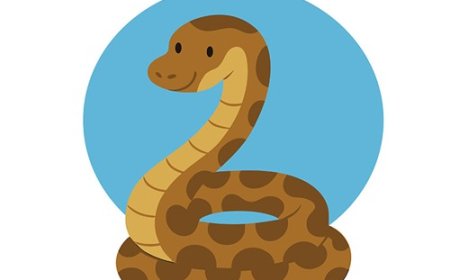Aardvark Facts for Kids: Habitat, Diet, and Amazing Adaptations | Academic Kids
Explore fascinating aardvark facts for kids! Learn about their habitats, diet, behavior, and unique adaptations in this kid-friendly encyclopedia guide. Perfect for student research and fun learning.
Aardvark (Orycteropus afer)
Introduction
The aardvark (Orycteropus afer), often referred to as the "earth pig" due to its Afrikaans name, is a nocturnal mammal native to sub-Saharan Africa. Despite its pig-like appearance, the aardvark is not related to pigs but is the sole surviving member of the order Tubulidentata. Its most distinctive features include a long, tubular snout, rabbit-like ears, and powerful limbs adapted for digging.
Physical Description
Aardvarks are medium-sized mammals, typically weighing between 40 to 65 kilograms (88 to 143 pounds) and measuring about 1 to 1.3 meters (3.3 to 4.3 feet) in length, excluding the tail. The tail itself is thick at the base and tapers gradually, adding an additional 50 to 70 centimeters (20 to 28 inches) to their length.
Their bodies are stout with an arched back, and they possess strong limbs. The front feet have four toes, each ending in a robust, shovel-like nail that is intermediate between a claw and a hoof, ideal for digging. The hind feet have five toes. Aardvarks have sparse hair covering their pale yellowish-gray skin, which often appears reddish-brown due to staining from the soil.
The head is elongated, ending in a pig-like snout equipped with a keen sense of smell. Their long ears can stand erect and are capable of folding back to prevent soil from entering while digging. The mouth is small and tubular, housing unique teeth that lack enamel and consist of numerous thin tubes of dentine, which continuously grow to compensate for wear.
Habitat and Distribution
Aardvarks inhabit a wide range of environments across sub-Saharan Africa, including savannas, grasslands, woodlands, and bushlands. They are absent from the Sahara and Namib Deserts, as well as swampy areas where the water table is too high for burrowing.
Their distribution is largely determined by the availability of ants and termites, their primary food sources, and suitable soil for digging burrows. Aardvarks are solitary animals with large home ranges, often overlapping with those of other individuals.
Diet and Hunting Behavior
Primarily insectivorous, aardvarks feed almost exclusively on ants and termites. They emerge from their burrows shortly after sunset and use their acute sense of smell to locate insect nests. Upon finding a nest, they use their powerful forelimbs to dig into it and extend their long, sticky tongue—measuring up to 30 centimeters (12 inches)—to capture the insects.
An aardvark can consume up to 50,000 insects in a single night. Their diet provides most of their water requirements, allowing them to survive in arid environments with limited access to free-standing water.
Reproduction and Lifecycle
Aardvarks breed once a year, with mating typically occurring during the rainy season. After a gestation period of about seven months, a single offspring is born, weighing approximately 1.7 to 2 kilograms (3.7 to 4.4 pounds). The young aardvark remains in the burrow for the first two weeks of life before beginning to accompany its mother on foraging trips.
By six months of age, the juvenile starts digging its own burrows but may continue to stay with the mother until the next breeding season. Aardvarks can live up to 10 years in the wild and have been known to live longer in captivity.
Behavior and Social Structure
Aardvarks are nocturnal and solitary creatures, spending the daylight hours in their burrows to avoid predators and the heat of the day. They are primarily active at night, traveling several kilometers in search of food. Their movement is generally slow and deliberate, but they can dig with remarkable speed when necessary.
Each aardvark maintains a primary burrow used for shelter and breeding, as well as several temporary burrows scattered throughout its home range. These burrows can be extensive, with multiple entrances and tunnels extending up to 13 meters (43 feet) in length.
Conservation Status
The International Union for Conservation of Nature (IUCN) currently lists the aardvark as a species of "Least Concern," indicating that its populations are stable across its range. However, aardvarks face threats from habitat destruction due to agricultural expansion, urban development, and the use of pesticides, which reduce the availability of their insect prey.
In some regions, aardvarks are hunted for their meat and body parts, which are used in traditional medicine and as good luck charms. Climate change and prolonged droughts also pose risks by affecting the abundance of ants and termites, potentially leading to food shortages.
Cultural Significance
In various African cultures, the aardvark holds symbolic meanings. Among the Hausa people, parts of the aardvark are used to create charms believed to grant the wearer the ability to pass through walls or become invisible at night. The Margbetu, Ayanda, and Logo tribes craft bracelets from aardvark teeth, considering them good luck charms.
In African folklore, the aardvark is admired for its diligent search for food and fearless response to soldier ants. The Dagombas of Ghana believe the aardvark possesses supernatural powers, including the ability to transform and interact with humans.
The aardvark has also made appearances in popular culture. The children's book and television series "Arthur" features an anthropomorphic aardvark as the main character. Additionally, the aardvark has been depicted in cartoons such as "The Ant and the Aardvark" and has served as a mascot for military units, including the U.S. Navy's VF-114 squadron.
Interesting Facts
- Unique Taxonomy: The aardvark is the only living species in the order Tubulidentata, making it a unique branch in the mammalian family tree.
- Ecosystem Engineers: Aardvark burrows provide shelter for various other animals, including warthogs, porcupines, jackals, and reptiles, highlighting their role in maintaining ecosystem diversity.
- Adaptations: Their ability to seal their nostrils and fold their ears prevents soil from entering while digging. Their thick skin offers protection against insect bites and predators.
- Efficient Diggers: Aardvarks can dig up to 2 feet of soil in just 15 seconds, showcasing their powerful limbs and specialized claws.
- Dietary Flexibility: While termites are their preferred food, aardvarks can switch to consuming ants during periods when termite populations are low, demonstrating dietary adaptability.
<h2>Kid-Friendly Summary</h2>
<p>
Aardvarks are special animals that live in Africa. Even though they look a little like pigs, they are not related to them at all. They spend the night searching for ants and termites to eat, using their strong claws to dig and their long, sticky tongues to catch insects. During the day, they hide in big burrows underground to stay safe and cool. Aardvarks are important because their burrows help many other animals find shelter. Even though they sometimes get hunted or lose their homes, aardvarks are still doing well in the wild. They are amazing diggers, and their unique bodies help them survive in Africa’s grasslands and woodlands.
</p>
📘 Vocabulary Words
| Word | Definition |
|---|---|
| Aardvark | A nocturnal mammal from Africa that eats ants and termites. |
| Tubulidentata | The scientific order containing only the aardvark. |
| Nocturnal | Active during the night and asleep during the day. |
| Insectivorous | Feeding mainly on insects. |
| Burrow | A tunnel or hole dug into the ground by an animal for shelter or nesting. |
| Gestation | The period when an animal is pregnant, between conception and birth. |
| Ecosystem Engineer | An organism that creates or changes habitats for other animals. |
| Adaptation | A special feature that helps an animal survive in its environment. |
| Predator | An animal that hunts and eats other animals. |
| Conservation | The protection and preservation of animals and their habitats. |



















































